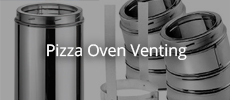Hey Gulf I am pretty much just fallowing the directions from the kit I am building. I did stray a little bit by doing the weep holes and tile but considered that to be a up grade to their suggestions for waterproofing the oven. I was a bit leary of the foil on the insulation but the layer of castable would have had the water sucked out by the insulation and then you would start off with wet insulation. The floor tiles are 2" thick and then 1" of the castable and about 1/2" of mortar to stick the floor down so we have roughly 3.5" of floor to help retain heat. So I welcome any and all advice or questions as to what or why I am doing something. I also want to pretty much just follow the kit to keep myself from going nuts and getting carried away.
Randy
X
-
The idea of the foil in this build is to prevent the moisture transfer from the wet castable into the cal sil board. It does not encapsulate the cal sil in an attempt to prevent moisture from weather.
Leave a comment:
-
I have been out of the loop for a little while, but foil over the insulation layer used to be not a "best practice". Also, 2" of refractory for an oven floor used to be standard. However, I like to build sort of "in between" a pizza oven and bread oven standards.
- Likes 1
Leave a comment:
-
Hey Randy, you know, I thought the same thing about the door when I saw it. But, I have had really good heat retention so far. I had some leftover FOAMGLAS, so I thought I would make an insulated door anyway. I fooled around with a prototype and found it awkward when trying to tilt it out through the external arch. I ended up making an insert and added a gasket to the kit door. I haven't had a chance to fully test its effectiveness once I tweaked it so it doesn't get stuck; but, you can check it out toward the end of my build.Originally posted by RandyJ View PostGiovanni Rossi one thing that I think might make a big difference would be to build a insulated door. Seeing as the door that comes with is just a sheet of stainless steel. That will block some of the heat from escaping but I am sure we can do better. So sometime after I am done I will probably build a new door
Randy
Great progress so far. It's going to be fun watching you zoom through this build to meet your deadline. I was probably one of the slowest in Ben's archive
Leave a comment:
-
Well I am glad I got a bunch done last night but I am not sure I will be able to do much today as it got kind of cool last night ( like 45F ) and apparently the castable doesn't like cold weather and is still not set this morning. It is supposed to be 75F here today and I covered it with a peice of black plastic so hopefully it will set but not sure if I will be able to start setting floor tiles this afternoon. I guess I can do some of the other yard work that needs doing.
Randy
Leave a comment:
-
Hey Gulf that is what I was thinking. I figured there is almost no weight on any of those spots In the middle of the floor plus I have 12x12 x2 floor tiles so the weight is spread ver evenly. Plus there is 1" of refractory castable on the insulation. So the weight is spread very even. I just laid out the tiles and cut the ones directly above the weep holes out and then just went to town on it.
I managed to cut out the insulation got their form on and mixed and poured the castable. Not to bad for a evenings work. I also had to run get a few things from menards but those were not necessary for today. We shall see how this goes but so far so good.
Randy
Leave a comment:
-
As far as the blowouts are concerned, It is an easy patch to make them level. However, there is no considerable weight on the 2" rigid insulating board in the middle of the oven floor,
Leave a comment:
-
Giovanni Rossi one thing that I think might make a big difference would be to build a insulated door. Seeing as the door that comes with is just a sheet of stainless steel. That will block some of the heat from escaping but I am sure we can do better. So sometime after I am done I will probably build a new door.
As for the blowouts my slab was almost a week old but I have seen many times at work when drilling through concrete sometimes it just happens. I will just leave the tile above the weep hole out and it should be just fine. They are just about 2" hexagon so should be good for water flow. Hopefully it is never needed.
Randy
Leave a comment:
-
Randy,
I used Joe's idea for the weep holes. I thought it was a perfect solution and it gave me yet another reason to use the angle grinder - my new favorite tool. I was surprised you had such large blowouts too and even more so when you said you needed to clear only about 1/4". I'm wondering if it has anything to do with how long your slab cured. I had the luxury of time and let mine wet cure for about 3 weeks before I knocked out the plugs.
Regarding the added insulation... As I detailed in a PM to you: like your first oven, I really beefed up both the floor and dome going for max heat retention. I'm getting really good results for cooking beyond pizza. I haven't had enough firings to produce "scientific" data. I know Ben is interested in how the results compare to the kit's standard. The question to be answered is if the differential warrants the extra expense and time.
Leave a comment:
-
Well it was a very busy afternoon for me. My shipment arrived a little after I got home from work. I was really hoping it would be here around lunch time so I could bail out of work early but I spent the whole day at work. It was killing me. Once the driver got here it was the same kind of truck that they had last time. I started to get that sinking feeling but luckily this guy was like oh sure we do this all the time. So he flipped out the Tommy gate and carefully loaded it on to there and lowered it down. The driver said we'll your driveway isn't to steep maybe we can just pull it up there for you. As it was the 2 of us could barely move the crate with the pallet jack. So I said let's just drop it at the end of the driveway and call it good. I then proceeded to move everything to the garage and shed. I and very tired now. Luckily one of my neighbors took pitty on me and helped. I can't wait to get started on this.
Randy
- Likes 2
Leave a comment:
-
Hey Gulf thanks for the input. How on earth did you manage to not have and blowout? Or did you drill down from above. I had the sleve only 1/4" below the surface and popped a 3" disk out of each. I was pretty surprised that it blew out that bad as it was just a light tap with a chunk or rebar. No hammer at all.
If I had not had the big blowouts I was considering doing what you posted. But as is will probably just cut the tile out above the hole and let it rideas it already slopes in pretty nicely.
Randy
Leave a comment:
-
This what I came up with to make sure no drain hole was blocked by a tile.
Leave a comment:
-
david s I understand that 2" of calsil is the minimum, but on my last oven I went nuts and did everything to get extended heat retention and I never really used it. So this time I decided I was not going to go after that as it just adds to the cost and complexity of finding the materials.
As to the weep holes I can understand that it makes sense. I really don't want to have wet insulation. I have heard the horror stories of that. I am planning to build a Pavillion that will be 8x12 so roof is roughly 10x15 so that should keep most of the rain and snow off the oven but probably not all of it.
A big part of why I went the route I did was to keep myself from over thinking and engineering everything. If left to my own decision making it would take over far to much time and cost me far more money. I know this about me so I am doing the best to prevent it from happening. Just look at what I did to my sons treehouse. I know this kit gets good results and has good reviews and is built very similar to the Pompeii oven that I loved before.
Randy
Leave a comment:
-
I brought the idea to this forum of having weep holes under the insulating board many years ago mainly because my design employs a recess in the supporting slab. This innovation has become quite popular now and works extremly well.I redesigned my supporting slab to accomodate more weep holes that locate to the dome insulating space. This also works extremely well. Moisture always wants to run away from heat. The drawing explains how it works.
Last edited by david s; 05-07-2024, 10:58 PM.
Leave a comment:
-
2” cal sil is considered minimal underfloor insulation, but you should follow the manufacturers instructions. However it shouldn’t be too difficult to add another layer if you want. I recommend two layers of 40 mm cal sil because that’s what is available to me.
Leave a comment:





Leave a comment: